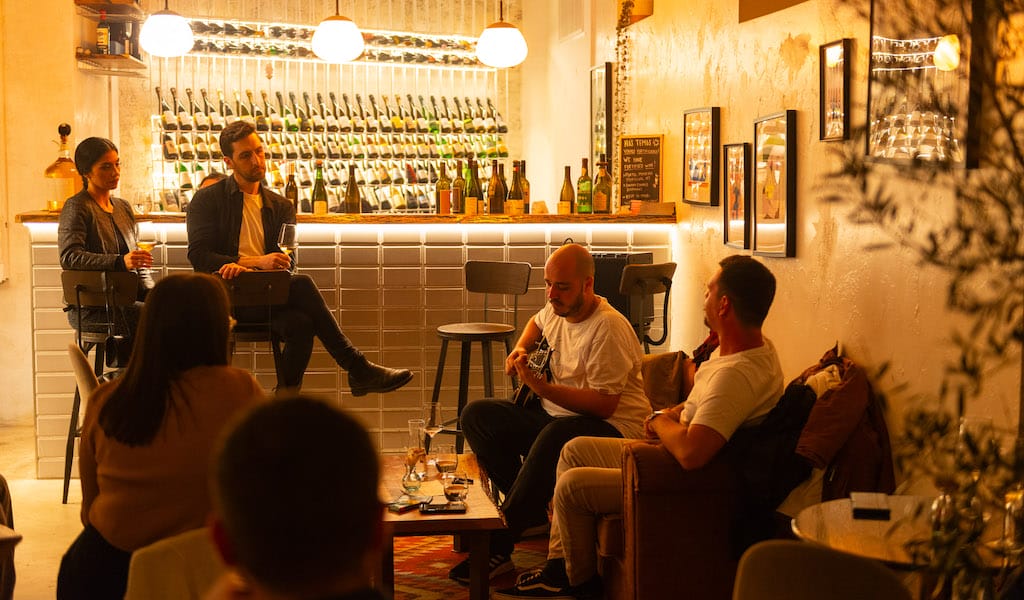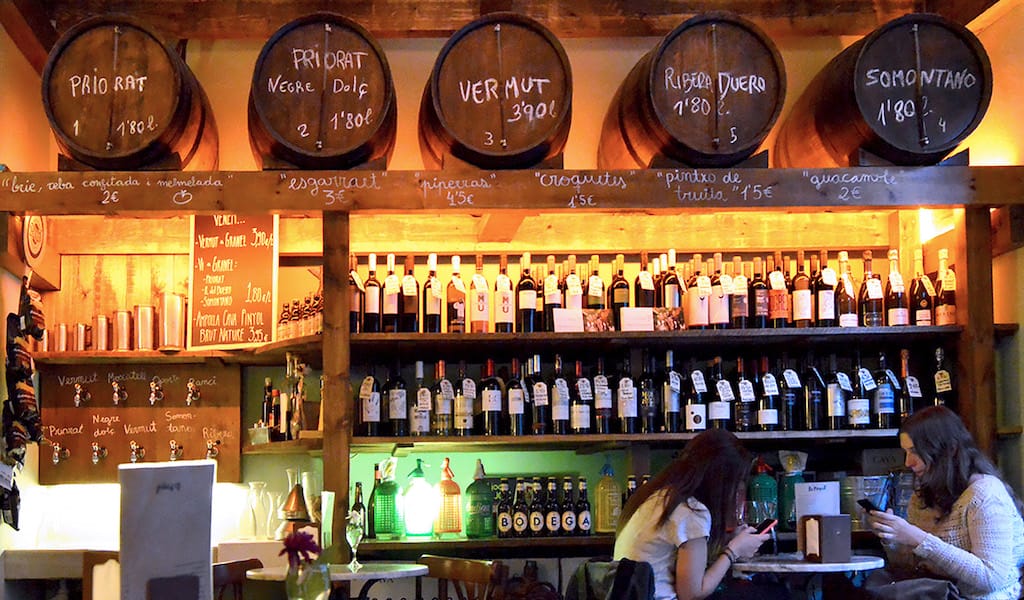The Borgo Vecchio neighborhood in Palermo is sandwiched between the affluent Politeama-Via Libertà district and the historic fishing community of Castellammare, also known as la Loggia. On one side you have the Via Libertà, an arterial road peppered with theaters and gardens that the legendary composer Richard Wagner once described as the Champs-Élysées of Sicily. On the other, you have the scent of the foamy sea.
In 1556, the neighborhood stretched from the San Giorgio gate to the Santa Lucia church. As a result, it adopted the name of this physical boundary and became known as Borgo di Santa Lucia. Lured by the promise of development of a nearby port, the street quickly attracted artisans and merchants from other regions and the district grew in stature. The glory faded fairly quickly after a new harbor was built further south: thus, the moniker Borgo Vecchio (“old district”) was born.
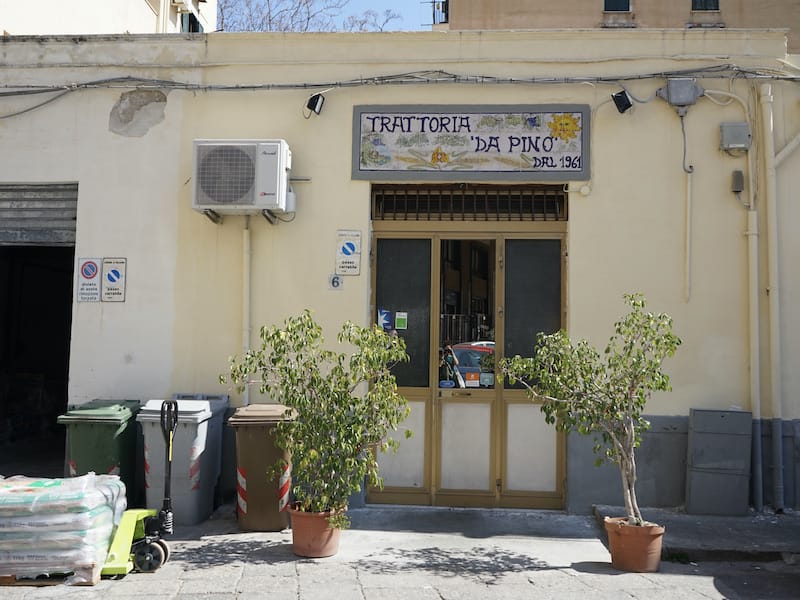
Although the district may have lost its prestige, it still hosts a number of thriving cultural landmarks and culinary institutions, among them Trattoria da Pino. Established in the 1960s, the trattoria has weathered many changes to the city. It’s no wonder, then, that the decor of the restaurant resembles a kind of cabinet of curiosities; a number of items are on display here, each telling a story about the history and culture of the area, as well as the Pipitone family, who have held the property for three generations.
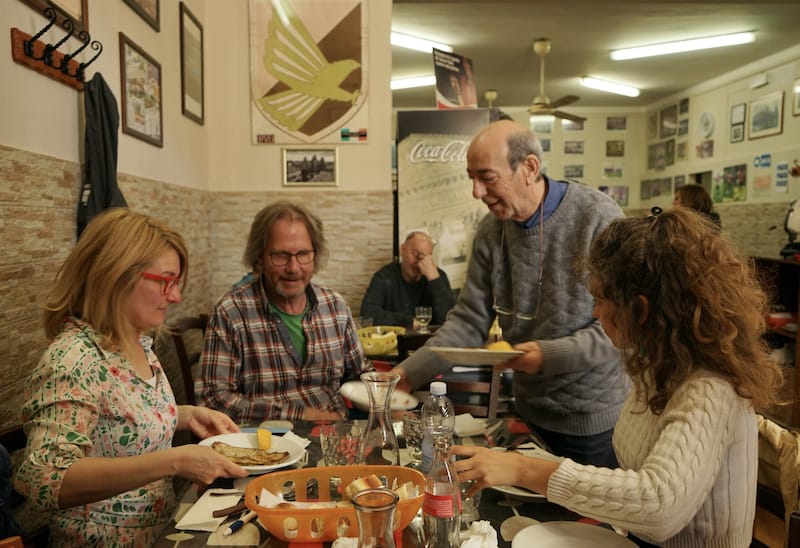
There is a calendar in honor of Sant’Anna to make sure no day passes without the veneration of the neighborhood’s patron saint; various pink-and-black items are scattered around to reiterate support for the Palermo Football Club; on the walls are historic photos of the city and some Christmas decorations, because, well, every day is a feast here.
While we wait for a table, we notice that human exchange is at the forefront of the experience at Da Pino. Inside are several large tables where you may be seated across from a stranger. But they won’t be a stranger for long. Speaking with the customers seated together, we realize many have just met, making most of the opportunity to make friends over a meal. Giovanni and Giuseppe – the son and grandson of the original owner, respectively, an uncle-and-nephew team – run the place these days. They encourage such interactions by striking up conversations and bringing customers into the fold of their discussions. It has always been like this here, and these are traditions that deserve to be preserved. Giuseppe is the third generation of the Giordanno family managing the restaurant, running it just as it has been run for years. The Trattoria turns into a lively place at lunchtime, and makes a point of serving all the essential hits of Sicilian popular cuisine. You don’t come here for fancy plating or creative cuisine, but rather for the familiar feeling and comfort Da Pino provides. As both the restaurant and the neighborhood are not yet crammed with tourists, it is a great place to experience a small slice of everyday Palermitan life.
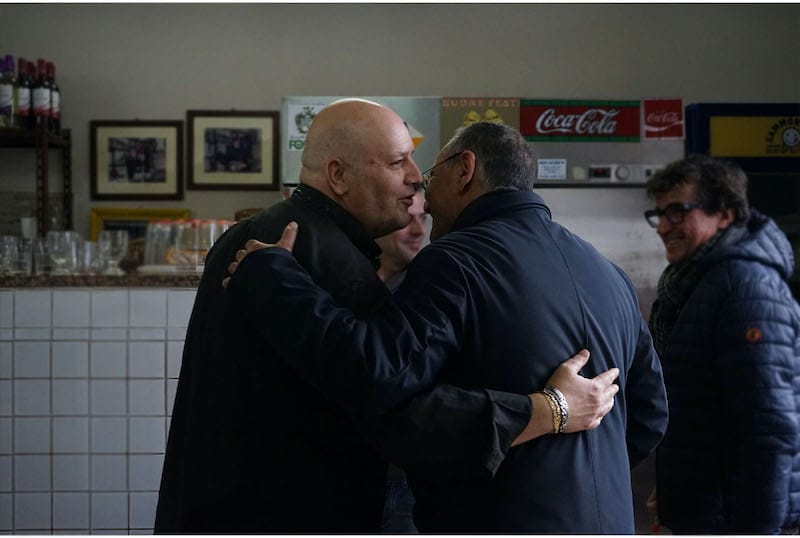
There is a printed menu here, but since the list of dishes varies every day, the “real” menu is delivered verbally. The offer includes local and regional seasonal recipes – and, of course, pasta is always in season. To make sure we won’t miss out on a flagship recipe, we solicit tips from the people at our table. Their advice is unmistakable and univocal: for antipasti (appetizer), the involtini di pesce spada, a Sicilian recipe of swordfish rolls, followed by a staple of Palermitan cuisine: pasta alla glassa, a pasta dish made with the pan drippings of a pot used to make a meat stew. We go for their recommendations, even if the list is long and other famous Sicilian dishes catch our attention, among them, pasta con le Sarde (pasta with sardines) or spaghetti alla Siciliana (spaghetti with tomatoes, breadcrumbs and capers) – we’ll have to come back soon for those!
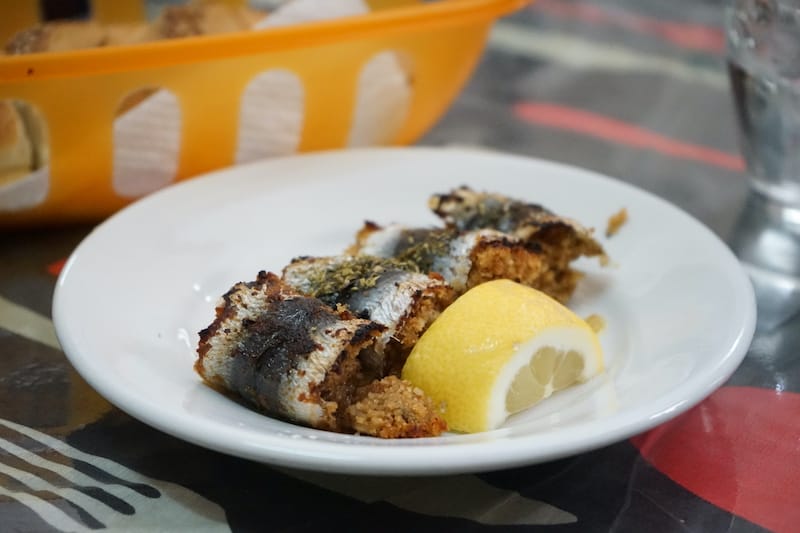
While we wait, we order some house wine and have the opportunity to interact with other locals who work nearby. Local violinists Davide, Gianni and Mario have been coming here frequently for more than 20 years. As we spoke, the table next to us – a group of international digital nomads – became curious and asked to join the conversation. We welcomed them and they were soon being given recommendations for what to order, delighted to encounter Palermitan hospitality. They went for a mix of secondi piatti – main course dishes that generally comes after the pasta. Nene, from Austria, loved Da Pino’s cotoletta alla Palermitana – a Palermo-style schnitzel, surprisingly light compared to the Milanese version, which is cooked on the grill. As there was still some room left at the table, Antonino and Ignazio, two workers who both live in nearby neighborhoods, also joined our conversation and we got to have an entertaining and joyful lunch.
According to Davide, Gianni and Mario, very little has changed here in the past two decades: same dishes, recipes and great service. As the dishes arrive, Gianni says, laughing: “Well that’s not fully true, it used to be a taverna – a bar where traditionally one would drink wine while eating a boiled egg. So there have been some upgrades.”
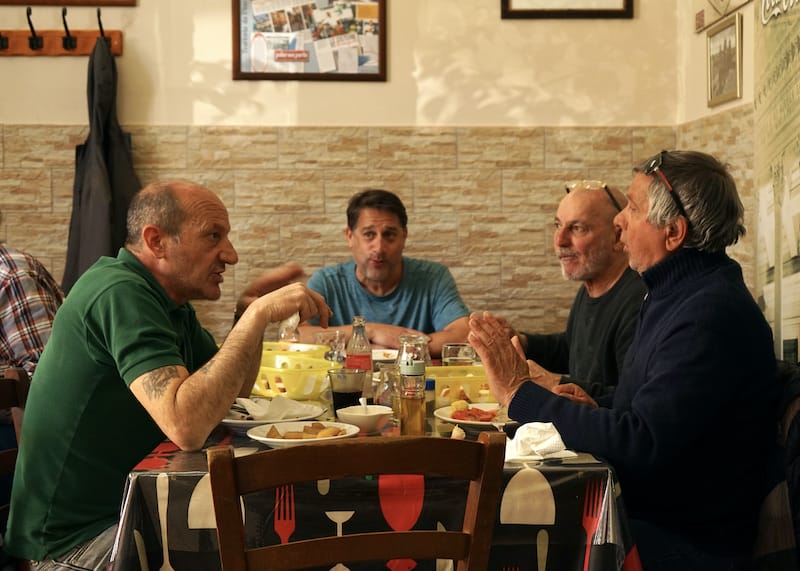
Mario adds, joking: “Well, the upgrade is not only in the content but also in the name. At the time of Giuseppe’s grandfather, the place was called Piscia e Trema (‘The piss and the shiver’).”
“How about we drop that story for now?” requests Giuseppe. Apparently, he is tired of listening to the frequently regurgitated story about this historic name. We’ll respect his wishes and leave it to your imagination to fill in the blanks.
Like the Borgo Vecchio neighborhood itself, it appears that the trattoria, too, has several names, histories, secrets and mysteries. Its presence reminds us that though names may change with the passage of time, the emotions, memories, conversations they inspire, are here to stay.
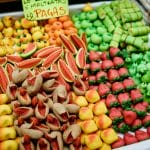 February 6, 2019 Five-a-day in Mexico City
February 6, 2019 Five-a-day in Mexico City
We visit Mexico City’s markets to stock up on fruits and vegetables, but sometimes we […] Posted in Mexico City April 10, 2024 Black Sheep Lisboa
April 10, 2024 Black Sheep Lisboa
It was an unusual night. But Black Sheep is, admittedly, an unusual venue.
Lucas […] Posted in Lisbon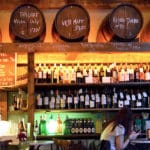 April 23, 2015 Lo Pinyol
April 23, 2015 Lo Pinyol
Editor's Note: Sadly, this spot closed in late 2022.
Bars and literature are like […] Posted in Barcelona
Segolene BulotSegolene Bulot
Published on May 24, 2023
Related stories
February 6, 2019
Mexico CityWe visit Mexico City’s markets to stock up on fruits and vegetables, but sometimes we opt for frutitas de leche, fruit-shaped sweets, instead. (Surely they count towards our five portions of fruit and veg a day, right?) Learn more about how the market works and the important role it plays in daily Mexico City life…
April 10, 2024
LisbonIt was an unusual night. But Black Sheep is, admittedly, an unusual venue. Lucas Ferreira, one of the co-owners of the Lisbon wine bar, had pulled out a guitar and was engaging in a jam session with a former bandmate. For a good 45 minutes, the normally buzzy bar was on pause: the chatter had…
April 23, 2015
BarcelonaEditor's Note: Sadly, this spot closed in late 2022. Bars and literature are like bees and flowers: two separate worlds linked to each other through a symbiotic relationship that benefits both. Writers and characters have been the natural inhabitants of taverns and pubs in Dublin and London, bohemian cafés in France, Vienna and Madrid, and,…


















































